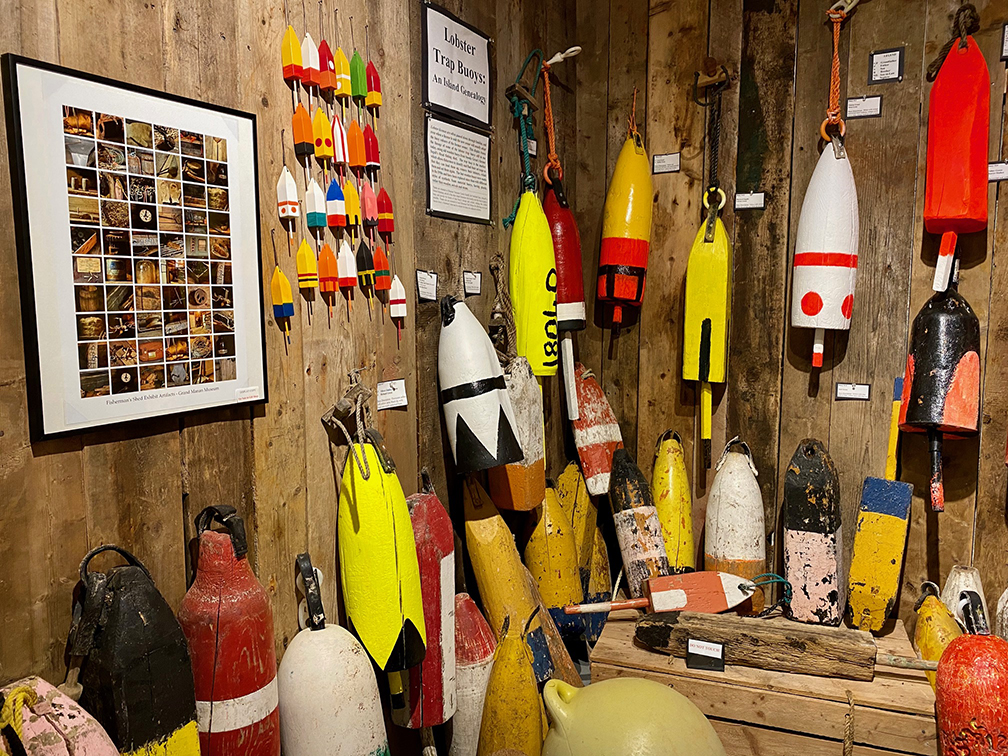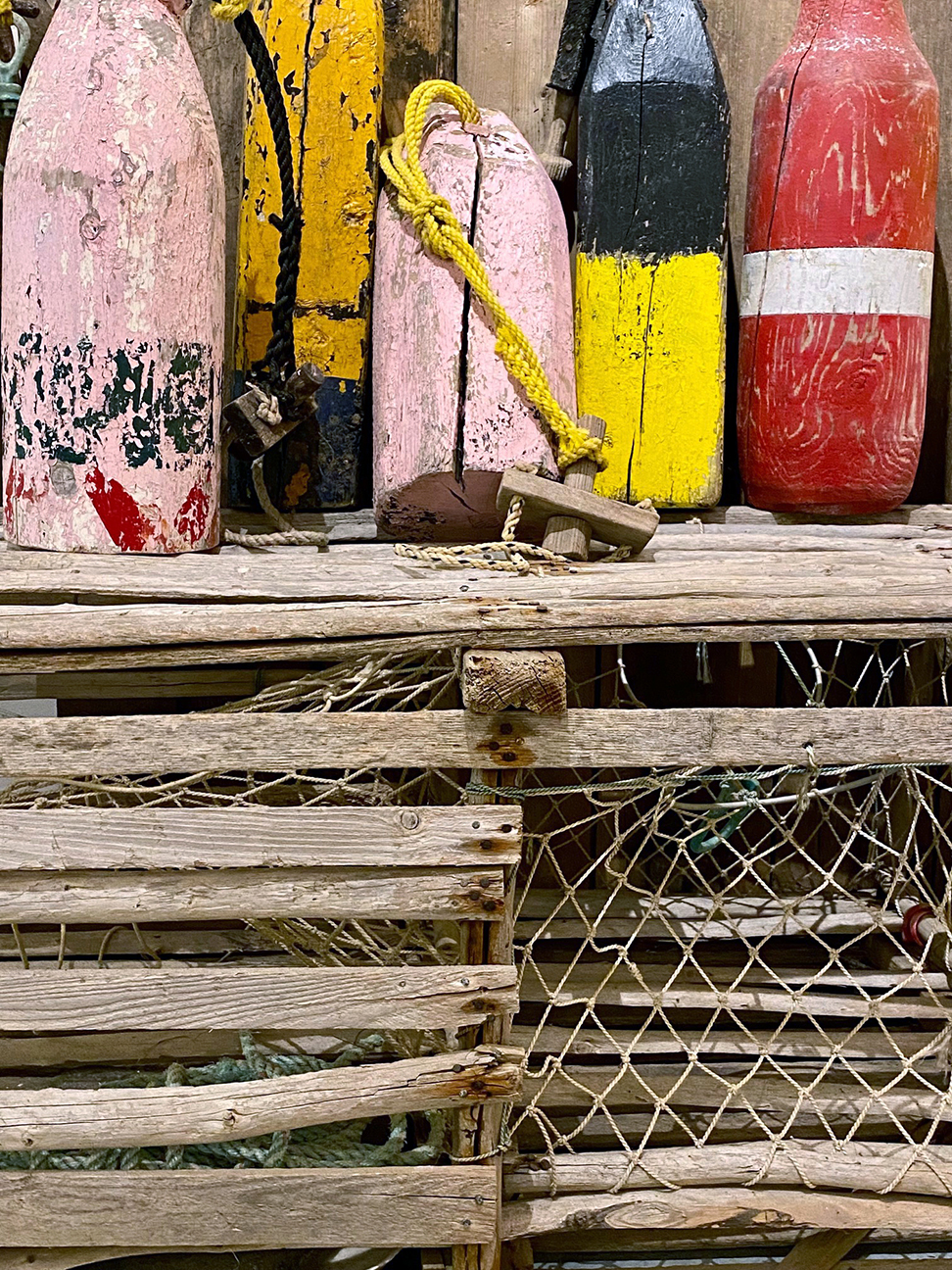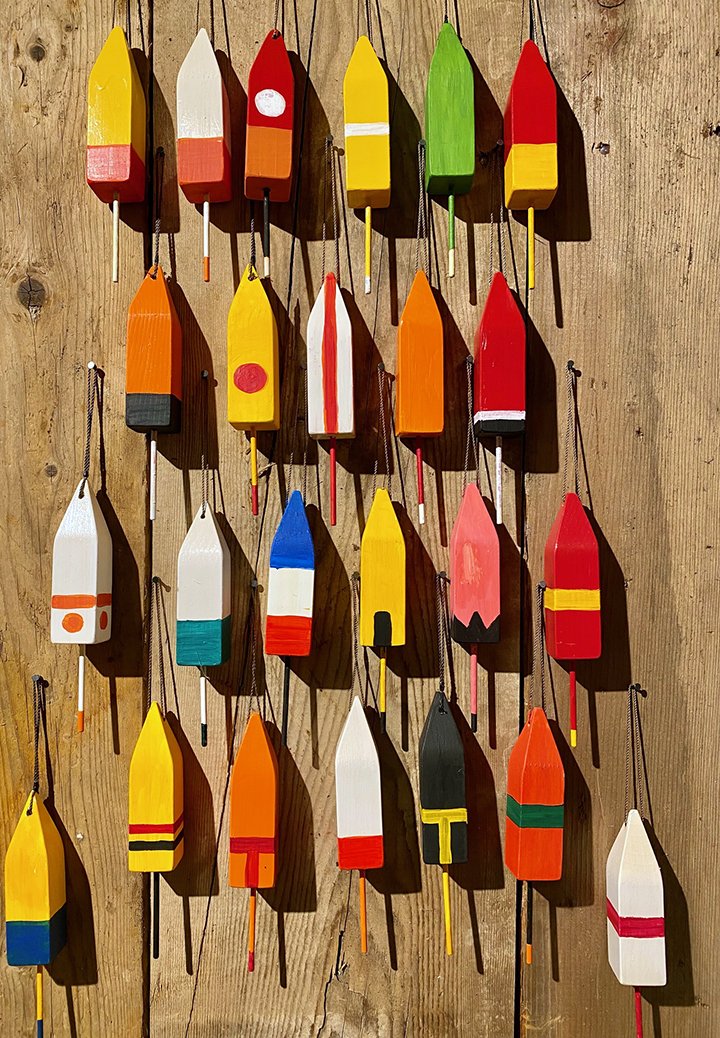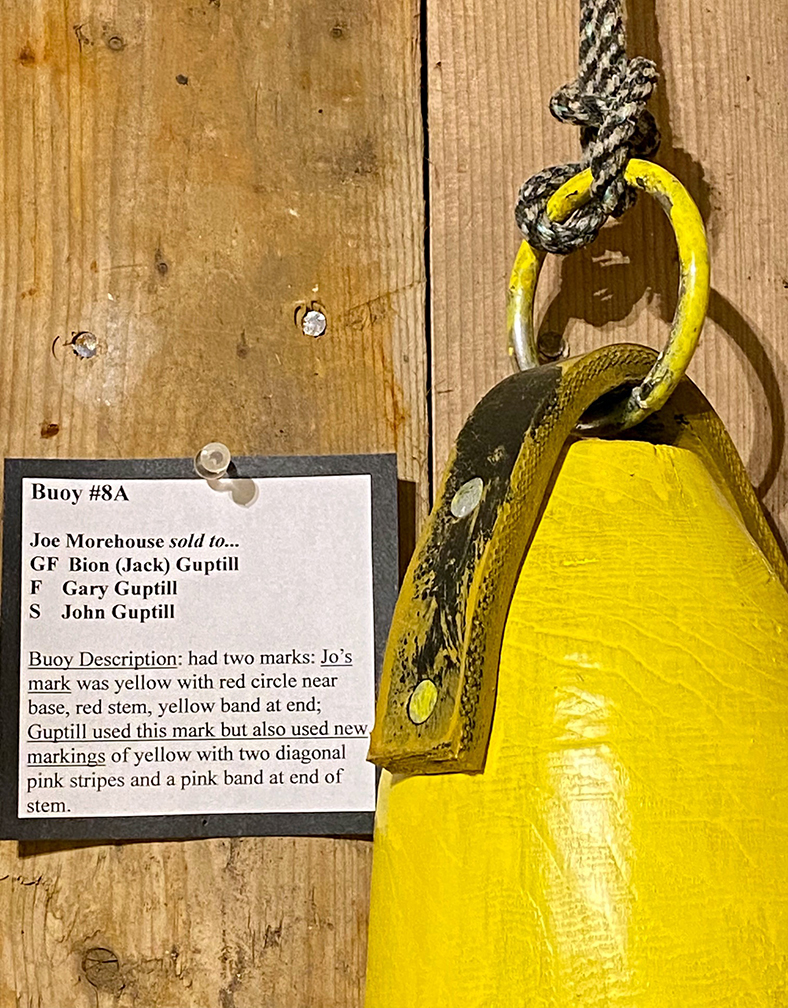LOBSTER TRAP BUOY EXHIBIT
The lobster trap display traces the lineage of some of the lobster trap buoys still in use today, using old wooden buoys from Snooks Green’s former Ingalls Head fishing shed, and buoy donations from fishermen.
Lobster Trap Buoys - An Island Genealogy: Lobster licenses are often passed down through families, and even when a license is sold the new owner will usually adopt the buoy colours of the former owner.
The trap buoy is the marker which allows fishermen to identify and find their set traps so that they can haul them up, remove their lobsters, re-bait them and set them again. The last wooden buoys were made in the 1950s and have been replaced since then with different styles of buoy made from synthetic foam, rubber, or plastic. They usually have plastic or rubber, rather than wooden, swivels and stems.

- Historic wooden buoys
- Newly painted wooden buoys, showing buoy colours and markings still in use today and a legend tracing lineage
- Photographs of lobster traps on wharves, and of buoys, from c. 1960-1995
- A photograph of the “Lobster Trap Buoys of Ingalls Head” quilt patch from the Bicentennial Quilt (1784-1984) with legend identifying each owner of the colours/markings
- A miniature reproduction of the same quilt patch, with decorative wooden buoys (photos of buoys, photo of old buoys, photos of area)




